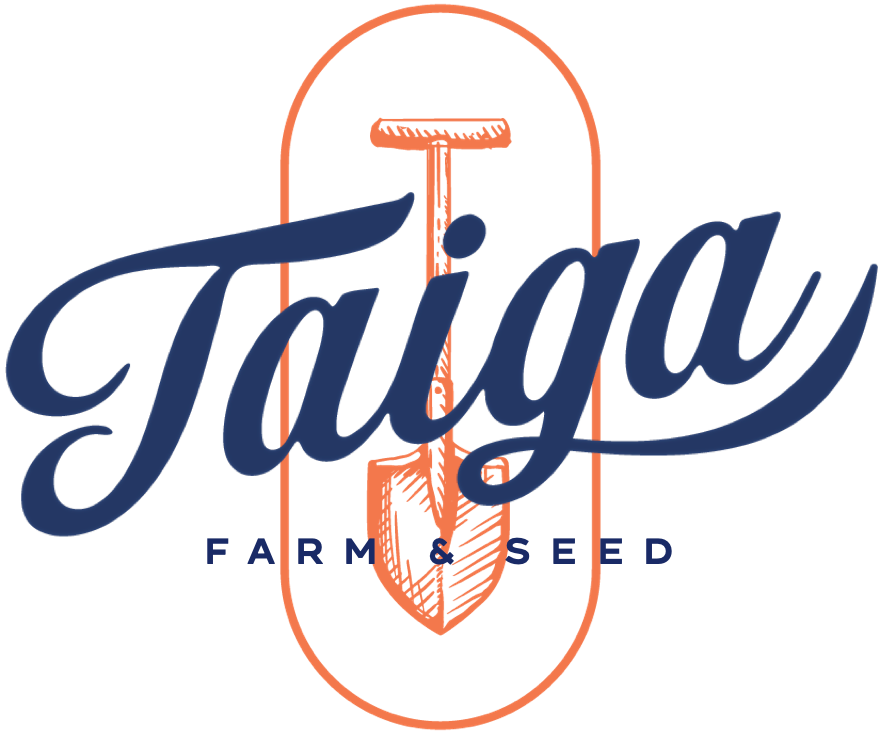If you’ve been thinking that the warm days of early spring are your only window to plant, think again! Here in our colder region, where freezing temps are still in the forecast, late May can actually be a perfect time to start your garden.
While the highs were in the 70s and 80s last week, we've been having and still expecting freezing temps at night. It’s a reminder that our growing season is a bit more nuanced, but that doesn’t mean it’s too late to plant. As gardeners in zones 3 and 4, we adapt to the unique challenges of our cooler climate by growing cool-weather crops that thrive in these conditions. And the good news? There are plenty of crops that excel in this environment, turning the limitations of our short growing season into a strength. With the right tools and varieties—like those suited to northern climates, which Taiga Farm & Seed makes easy with our curated collections—you can still get a strong harvest.
Why Late Starts Work in a Cold-Climate Garden:
-
Extended Cool Season: Our region benefits from a longer cool season that’s ideal for growing crops that need more time to develop. Cold-tolerant crops like beans, beets, lettuce, and broccoli flourish even with a delayed start.
-
Less Stress on Plants: With cooler temperatures, plants face less stress from heat, pests, and weeds, allowing them to grow strong and healthy.
-
Frost-Tolerant Varieties: Many plants, like kale, peas, and spinach, actually do better when planted before the last frost date. Even if we experience a cold snap or late frost, these crops are built for resilience.
The Advantages of Late Planting:

-
More Time to Adjust and Plan:
The unpredictable weather patterns in the north often make it difficult to plan ahead. Late planting gives gardeners extra time to adjust strategies. You can amend soil, choose frost-resistant varieties, and make informed decisions based on the current weather, safeguarding your plants for success. -
Wait for Ideal Soil Temperature:
Waiting until the soil reaches the ideal temperature ensures that your plants are starting off in the best possible conditions. Early spring can bring drastic temperature swings that stress young plants, but by planting later when conditions stabilize, your crops will benefit from more consistent, favorable temperatures.
What You Can Still Plant in Late May:

While late May isn’t the ideal time for every plant, it’s still early enough for many to catch up with the warmth as the season progresses. The key is that soil temperatures need to be at least 50°F 6 inches down before planting, even with row covers. With that in place, there’s enough residual heat in the soil to create a microclimate that helps plants thrive.
The only crop that truly can’t begin now is onions, as they need a longer growing season. However, for everything else—even tomatoes and peppers—you can still plant. If you're going for these, short-season varieties are your best bet. These varieties mature quickly, making them perfect for getting a late start. Luckily, our curated seed collections feature the best options for late planting.
Hardier Crops to Start in Late May:
There are plenty of hardy crops that can handle a cooler start. These crops are more resilient to frost and can thrive in the chilly nights of late May, giving you a great chance for a successful garden. Here are some of the best options:
-
Lettuce: Lettuce grows quickly and is perfect for the cooler temperatures of late spring. It can withstand light frosts, making it ideal for late spring planting.
-
Kale: Kale is incredibly frost-tolerant and will only get sweeter after a light frost. It’s a great addition to your garden for early summer harvests.
-
Spinach: Like kale, spinach thrives in cooler weather and can be planted later in the season for fall harvest too. It does well with some early-season chill.
-
Peas: Plant peas now for a delicious, early summer harvest. They handle the cooler temperatures well and are relatively quick to mature.
-
Radishes: Radishes are fast-growing and can be planted throughout the season for a quick and tasty crop.
-
Carrots: Though slower to grow, carrots do well in cool soil and can be planted now for a late-summer harvest.
-
Beets: Beets tolerate cool temperatures and can be planted now for a later-season harvest.
-
Chard: Chard is a hardy green that will thrive even when planted later in the spring season. It can handle cold nights and still produce a bountiful crop.
-
Cabbage: Cabbage loves cooler weather and can be successfully planted late in this season for a summer harvest.
-
Broccoli: Broccoli is a cool-weather crop that thrives in late spring and early summer. Planting it in late May gives it time to grow strong before the heat of summer.
-
Cauliflower: Like broccoli, cauliflower prefers cooler temperatures and can be planted late May-early June for a hearty summer harvest.
-
Chives: Chives are a hardy herb that can be seeded and thrive even with a late start, offering a fresh addition to your garden.
- Turnips: Turnips are another hardy crop that grows well in cool soil and can be planted ate May-early June.
Seed Starting for Warmer-Weather Crops:You can also start these seeds indoors in late May for warmer-weather crops, such as:

-
Tomatoes: Choose short-season varieties that mature quickly and are perfect for a later start. (Approx. 50-70 days to harvest)
-
Peppers: As with tomatoes, short-season peppers can still be started and will give you a chance at a late-season harvest. (Approx. 60-80 days to harvest)
-
Watermelon: These heat-loving fruits can be started now for a summer harvest, especially with a short-season variety. (Approx. 75-90 days to harvest)
-
Cantaloupe: Like watermelon, cantaloupe can be seeded now for a quick-growing, late summer treat. (Approx. 70-90 days to harvest)
-
Cucumbers: Start cucumbers now to enjoy a summer harvest. (Approx. 50-70 days to harvest)
-
Summer Squash (Zucchini and Yellow Squash): Both zucchini and yellow squash are fast-growing and thrive in the warm summer months. (Approx. 50-60 days to harvest)
The only crop that truly can’t begin now is onions, which require a longer growing season. But for everything else, whether it’s hardy greens or warm-weather fruits, you can still plant and get a fruitful harvest.
How to Get Started with Late Planting:

-
Wait for Soil to Warm Up: Even though the air is still chilly, the soil temperature may be rising—perfect for planting crops that prefer cool but not freezing conditions.
-
Start with Hardier Crops: Focus on varieties that thrive in cooler weather and can handle the occasional frost. These crops will benefit from the cooler air and can still produce a hearty summer harvest.
-
Consider Row Covers or Cloche: For those last cold nights, using row covers or a simple cloche can offer an extra layer of protection for your plants.
Takeaway:
In a colder region, late starts can be the key to a successful garden. With the right crops and a little patience, you’ll be growing a thriving garden—whether it’s spring, summer, or beyond. Don’t let a chilly forecast hold you back from sowing the seeds of a great harvest!
Have Questions or Thoughts?
We’d love to hear from you! Drop a comment below if you have any questions, or share your own gardening experiences. Whether you're a seasoned gardener or just starting out, we’re all here to CULTIVATE THE NORTH together!
Wishing you joy in every harvest,
Caroline


